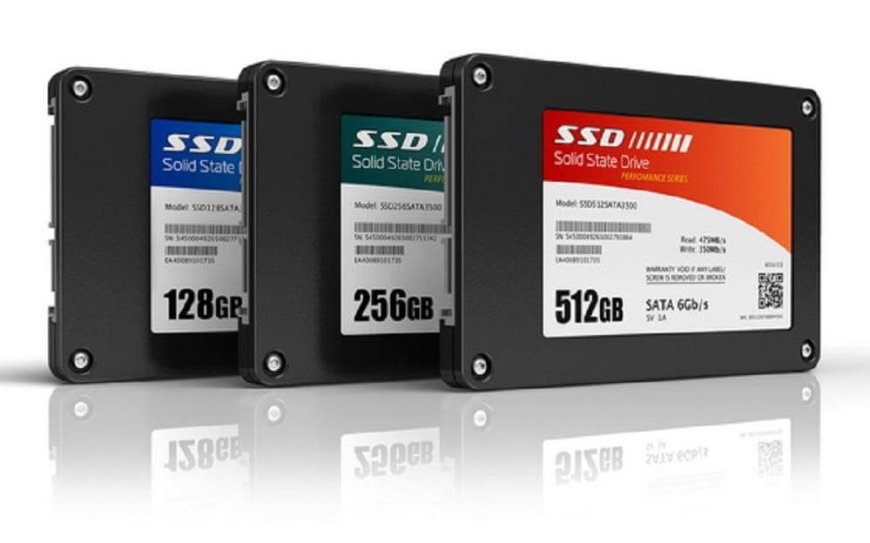How to install a solid state drive on your computer
How to install a solid state drive on your computer What you need to know Disconnect all cables and turn off the power before starting work

How to install a solid state drive on your computer What you need to know
- Disconnect all cables and turn off the power before starting work. Also wear an antistatic bracelet or shoes with rubber soles.
- SATA SSDs are installed differently than M.2 solid state drives, so check your computer carefully before purchasing and installing any solid state drive.
- After installation, check the BIOS to make sure your computer recognizes the new solid state drive.
Let™s explains how to install a SATA SSD and an M.2 SSD.
How to Install a SATA SSD on Your Desktop |
One of the best updates of the 21st century has been the transition from hard drives to solid state drives (SSDs). They are faster than disc drives and make your computing experience faster and more enjoyable. In addition, SSDs are easy to add to your computer. If you do not choose the fastest high-end solid state drives, SSD- SATA drive is more than enough for your daily needs. SATA solid state drives are also available for the price, as in some cases a terabyte of SSD space is available for less than $ 100. It is also easy to install.
- Disconnect the cables from the desktop PC and turn off the power. Place the desk on its side on a desk or table of comfortable height. Do not place it on the floor as there is too much risk of statics.
- If you have one, attach an antistatic wrist strap to yourself and your case to avoid static discharges that could damage PC components. If you do not have it, wear shoes with rubber soles, especially on the carpet. Also, periodically touch the metal part of the PC case to ground yourself.
- Remove the sidebar to access the computer.
- Locate the 2.5-inch drive bay. The location depends on the case. The bays are usually at the front. If necessary, use the SSD as a measuring tool to see where it fits. Make sure that the screw holes match the holes on the side or bottom of the solid state drive.
- Use the screws that came with the solid state drive or the computer base to install the solid state drive in the appropriate location in the case.
- SATA SSDs have two cables that you need to connect for them to work: the power cable and the data cable. Both are L-shaped but different in size. The larger of the two is intended for power supply and must be connected to the power supply. Locate it, connect the cable to the SSD and connect it.
- Locate the SATA cable. Maybe someone came with a new drive or motherboard. Connect one end to the SATA drive and the other end to the appropriate slot on the motherboard. It should be located near the right side, towards the front of the case. If you want the PC airflow to remain optical, push the excess power and parts of the data cable into the slot. This helps the air move through the computer to keep the components cool, and makes the inside of the computer tidier.
Must Read: Why is it worth reading books?
How to install a solid state drive M.2
M.2 solid state drives are generally faster than SATA solid state drives, but most importantly, M.2 solid state drives are a different form factor. This requires a special slot on the motherboard, so make sure you have one before buying one of these drives. Also make sure it is PCIExpress or SATA as they have different sockets. In any case, the installation is simple.
- Follow the instructions at the beginning of the SATA SSD to protect your computer from static electricity.
- Locate the dedicated M.2 slot on the system board.
- Unscrew the mounting screw.
- Carefully insert the M.2 solid state drive into the slot. It stands at an angle to the fixation.
- Carefully push the actuator and secure it with the set screw.
How to transfer data to SSD
Once your new drive is installed, you may want to install a new system to take advantage of its speed. If you want to transfer your old data, follow our Disk Update and Data Migration Guide. When installing any new drive on your PC, check the BIOS after installation to make sure your computer recognizes the SSD. If not, make sure the connections are correct.
Why still install an SSD?
Solid state drives are much faster than even the fastest hard drives, offering higher file transfer speeds and faster random access times. This means that the PC boots faster when the operating system is installed on a solid state drive, and games load faster. If you're not a gamer and don't mind leaving your computer running all the time, an SSD can make it faster and more responsive. With less expectation to run programs or move files. And even better, SSDs are cheap. You will probably want to use a hard drive for storage. Hard drives are cheaper per gigabyte. However, for a bootable or gaming drive, solid state drives are a great way to improve PC performance.
